Hiking
The Pacific Northwest is packed with nearly endless hiking opportunities, with tens of thousands of miles of trails winding through Oregon, Washington, Idaho, and Northern California. Here you'll find towering old-growth Redwoods, countless waterfalls, alpine lakes, and rugged peaks that make your experience unforgettable. Whether you're just starting out or pushing for bigger challenges, there's a trail that fits, and plenty of room to grow your skills as you go.
Options range from easy walks on smooth, well-marked paths with minimal elevation gain to tougher climbs that lead to high mountain summits. Hiking offers a flexible way to stay active, spend time outdoors, and build confidence in wild places. Progress comes with small, steady steps, and choosing trails that match your ability, gradually stretching your comfort zone.
Joining local hiking groups or clubs is a great way for beginners to discover new trails and meet adventure partners to share your outdoor experience. Explore online resources like trail guides, hiking forums, and club websites to find useful information on routes and tips for getting started. As you plan your hikes, gather basic gear such as sturdy boots, a daypack, and layered synthetic clothing so you're safe and comfortable on every outing. Taking time to learn about safety and trail etiquette makes each step more enjoyable and helps build confidence and skills along the way.
Trail Difficulty Levels
Understanding trail difficulty helps you choose appropriate hikes and progress safely. Research your area to find trails that match you experience and fitness.
Beginner Trails
Well-maintained paths with minimal elevation gain, perfect for building confidence and fitness.
Example Trails:
- Lower Twin Lake Trail (Mount Rainier)
- Boise River Greenbelt (Boise, Idaho)
Intermediate Trails
Moderate elevation gains with varied terrain, ideal for expanding your hiking repertoire.
Example Trails:
- Lake Twenty-Two (Washington)
- Silver Falls Loop (Oregon)
Advanced Trails
Challenging climbs with significant elevation and exposure, requiring excellent fitness and skills.
Example Trails:
- Mount Si (Washington)
- South Sister Summit (Oregon)
Basic Gear
Having the right hiking gear is essential for safety and a rewarding experience. Proper equipment keeps you comfortable and ready for changing conditions and weather.
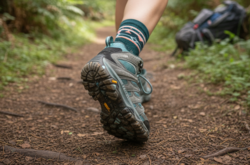
Hiking Boots/Shoes
Get a pair of quality hiking boots with good ankle support for rocky terrain. Visit a reputable outdoor store like REI for expert help choosing the right boots and size for your needs.
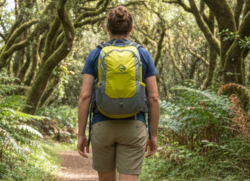
Daypack
Choose a comfortable 20–35L daypack with padded straps, a hip belt, and compartments for gear. Make sure it matches your torso length for best fit.
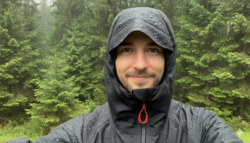
Rain Gear
Pack a lightweight, waterproof jacket for cold or wet weather, especially in the mountains. Choose one that's breathable and resists wind and rain.
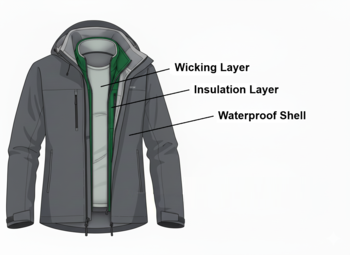
Layering System
Base layer wicks moisture, insulation keeps you warm, and a waterproof shell blocks wind and rain while letting sweat escape.
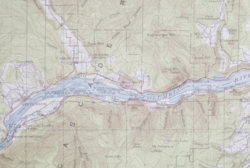
Navigation Tools
Bring a topographic map/compass, and GPS device or smartphone with offline maps. Know how to use both navigation methods.
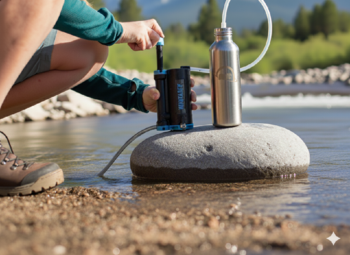
Water & Purification
Carry adequate water plus purification method (filter or tablets) for refilling from natural sources on longer hikes.
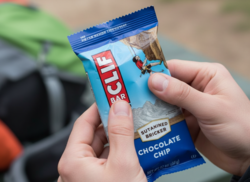
Food & Snacks
High-energy snacks and lunch for day hikes. Pack extra food in case you're out longer than planned or for emergency situations.
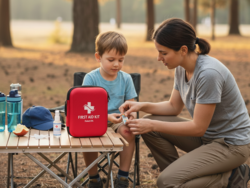
First Aid Kit
Comprehensive first aid kit including bandages, pain relievers, blister treatment, emergency whistle, and any personal medications.
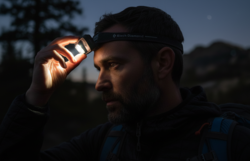
Headlamp & Flashlight
LED headlamp with extra batteries, plus backup flashlight. Essential for early starts, late finishes, or emergency situations.
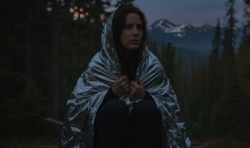
Emergency Shelter
Lightweight emergency bivy or space blanket for unexpected overnight stays due to injury, weather, or getting lost.
Safety Tips
Hiking presents unique challenges including rapidly changing weather, river crossings, wildlife encounters, and remote terrain. These safety tips will help you understand some of the challenges and prepare accordingly to ensure your safe return and a better expereience.
Trail essentials: daypack, hydration, nutrition, navigation, sun protection, layered clothing, head lamp, first aid, fire starter, emergency blanket
Ask local experts including hiking clubs, park rangers, forest service staff, and the staff at outdoor equipment stores about local trails, conditions & hazards.
Check weather conditions and trail reports before departing - conditions can change rapidly
Tell someone your hiking plan including trail, route, and expected return time
Join a club or group to learn from experienced hikers and gain confidence
It isn't advised to hike alone - It's better to go with a partner or group
Know your limits and choose hikes appropriate for your fitness and experience level
Turn around if weather deteriorates or you're behind schedule - the mountain will be there tomorrow
Stay on marked trails to prevent erosion and avoid getting lost
In bear country - make noise, store food properly, and know what to do if you encounter wildlife
River crossings can be dangerous - assess conditions carefully and turn back if unsafe
Cell service is limited in remote areas - don't rely on cell service
Getting Started
New to hiking? These tips will help you choose appropriate trails, understand potential challanges, and build the skills needed to safely explore this incredible northwest landscapes.
Choosing Your First Hikes
Start with popular, well-maintained trails close to urban areas offering good trail conditions, clear signage, and other hikers nearby. Begin with shorter distances (2-4 miles) and modest elevation gains (500-1000 feet) to build your fitness and confidence.
Understanding Trail Conditions
Weather in the Pacific Northwest mountains can change dramatically with elevation and rapidly throughout the day. What starts as a sunny morning at the trailhead can become a cold, wet afternoon at higher elevations. Always check recent trip reports and weather forecasts for your specific destination.
Building Hiking Fitness
Start with easier local trails and gradually increase distance and elevation gain. Focus on building leg strength and cardiovascular fitness. Practice hiking with a loaded pack to simulate real conditions. Consider hiking poles to reduce stress on knees during long descents.
Learning Essential Skills
Take time to learn map reading, compass use, and basic first aid. Practice these skills on easier hikes before attempting more remote or challenging trails. Consider taking a wilderness first aid course and learning Leave No Trace principles.
Seasonal Considerations
Summer (July-September) offers the best weather and access to high-elevation trails, but also the most crowds. Spring features waterfalls and wildflowers but muddy trails. Fall brings beautiful colors but shorter days and returning rains. Winter hiking requires specialized skills and equipment.
Trail Etiquette and Conservation
Yield to uphill hikers and horses. Stay on designated trails to prevent erosion. Pack out all trash including organic waste like fruit peels. Camp only in designated areas. Keep noise levels down to preserve the wilderness experience for others and wildlife.
Finding Hiking Partners and Communities
Join local hiking organizations like Washington Trails Association, Oregon Hiking, or Idaho Trails Association. Facebook groups and Meetup.com host regular group hikes for all skill levels. REI offers guided hikes and outdoor schools. Having experienced hiking partners accelerates skill development, increases safety, and makes the outdoors more enjoyable. The Pacific Northwest hiking community is generally welcoming and eager to share favorite trails and tips with newcomers.
Trail Resources and Planning Tools
Washington Trails Association (WTA.org): Comprehensive trail database with recent trip reports, detailed descriptions, and current conditions for Washington hikes.
Oregon Hikers (OregonHikers.org): Similar resource for Oregon trails with active forums and trip reports.
AllTrails: Mobile app with offline maps, GPS tracking, and user reviews for trails across all states.
Caltopo: Advanced topographic mapping tool for route planning and printing custom maps.
Mountain Weather: Check NOAA Mountain Forecast or Mountain-Forecast.com for elevation-specific weather predictions, not just valley forecasts.